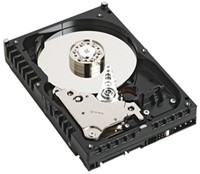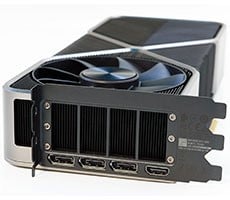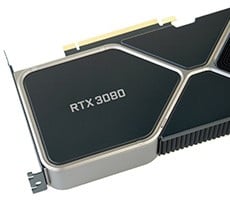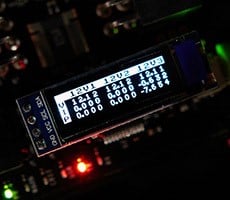Western Digital Raptor WD1500ADFD - Bigger, Faster, Stronger
Western Digital has earned themselves quite a reputation in the Computing Enthusiast market with their line of Raptor hard drives. Originally targeted as "Enterprise class" SATA variants of what WD had historically brought to market for high-end SCSI server storage solutions, the 10K RPM Raptor was an overnight success for end user performance freaks, including many of us here at HotHardware.com. WD's first iteration of the drive was a somewhat overly-svelte 36GB version that came outfitted with an 8MB cache. And it was actually not what one would term a "native SATA" drive, with a Marvell PATA to SATA bridge chip handling calls for the drive's SATA 1.5GBps interface back into what was essentially a PATA circuit block.
The second coming of the Raptor (yes it was near god-like to some), marked a welcomed increase in capacity to 74GB, with a pair of 36GB platters inside. The drive retained the bridge chip for its SATA interface, but updated firmware along with quieter operational acoustics and overall better performance, just offered more of a good thing. Plugging a pair of Raptor WD740s into a RAID 0 array was becoming commonplace in many Gaming Rigs and high-end Workstations. Regardless, the insatiable need for more storage capacity marches on, along with the need-for-speed; it almost goes without saying. With huge capacity drives like Hitachi's 7K500 entering the market, as well as new advances in 3GBps SATA interfaces speeds and other technologies like NCQ (native command queuing), Western Digital had to answer the call. Their answer? The new Raptor WD1500 series, which we'll be evaluating today.
|
NCQ, TLER and RAFF - Where's our acronym dictionary anyway?
In addition to the new Raptor WD1500's obvious enhancements in capacity and a larger cache, the drive boasts a few new additions to its feature-set, some of which are specifically targeted at RAID applications. You've probably read a fair amount regarding Native Command Queuing, so we won't dwell too much there except to say that the technology has limited benefits currently, unless your usage of the drive will be based in rigorous multi-threaded scenarios where requests on the hard disk can actually expand such that the queue depth and ordering need to be more efficiently managed. It's within situations like these that NCQ can very much have an impact by ordering multiple simultaneous commands from the OS and thus reducing associated rotational latencies pulling data from the disk. Regardless, as time goes on NCQ will have a more significant impact on performance and as such it's a nice feature to have for its future-proofing benefits.
Western Digital has also incorporated RAID-specific TLER (time-limited error recovery) and RAFF (rotary accelerated feed forward) technology with the Raptor WD1500. TLER is method of signaling the system RAID controller in the event that an error recovery process is taking longer than time-out specifications allow. This prevents the RAID controller from dropping the drive from the array during this period. This feature doesn't do much for you in a single drive configuration though and in fact TLER is turned off by default with the drive, only available to toggle on with a special utility we have yet to receive from WD.
RAFF (Rotary Acceleration Feed Forward) is a method of sensing RV (rotational vibration) of other drives in a multi-drive installation and then compensating for it, controlling drive head position and keeping within a safe tolerance during read and write operations. This feature supposedly can increase performance significantly, avoiding costly retry efforts where the drive head is ever so slightly bumped off the track, resulting in performance degradation. We weren't able to specifically prove out this claim but it goes without saying that RAFF is a welcomed feature, especially for those of us considering RAID array setups with this new breed of Raptor.








